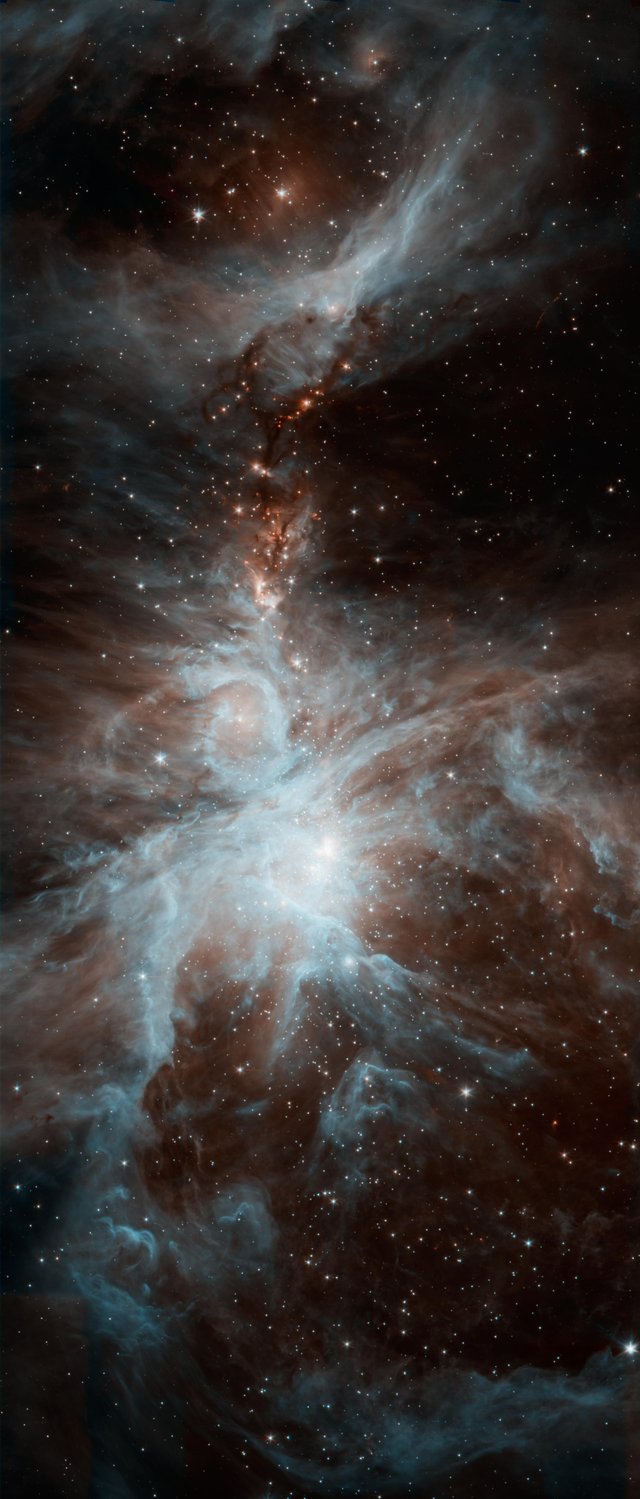The Orion Nebula
This is picture of the Orion Nebula, taken by the Spitzer telescope

This is a picture of an active area of star formation within the Orion Nebula. The Orion Nebula is one of the few nebula that we can see unassisted. The Nebula is 30-40 light years in diameter and is 1300 light years from Earth. Many of the stars it created are still loosely bound to it. More recent findings show that there is a black hole at the center of the nebula that is about 200 times the mass of the sun. [1][2]
It is easy for black holes to gain mass, but it takes a long time for them to lose it. Black holes lose mass in a process called hawking radiation. This is where matter-antimatter particle pairs are made at the event horizon, and then one escapes while the other doesn’t. Since the energy of the escaping particle has to come from somewhere, the black hole loses energy. Larger black holes actually lose mass slower than smaller black holes, because the difference in gravity is smaller. [3]
Space and the universe in general is such a natural miracle and I'm extremely curious what's out there. I hope I will be able to witness space travel in the future.
Amazing This blog don't stop writing
Excellent article, i'm fan to espace and science. Thanks for yr profil 🌙
I love this nebula! Have a look to my page, i'm astrophotographer:
https://steemit.com/photography/@clodoweg/sombrero-galaxy-m104